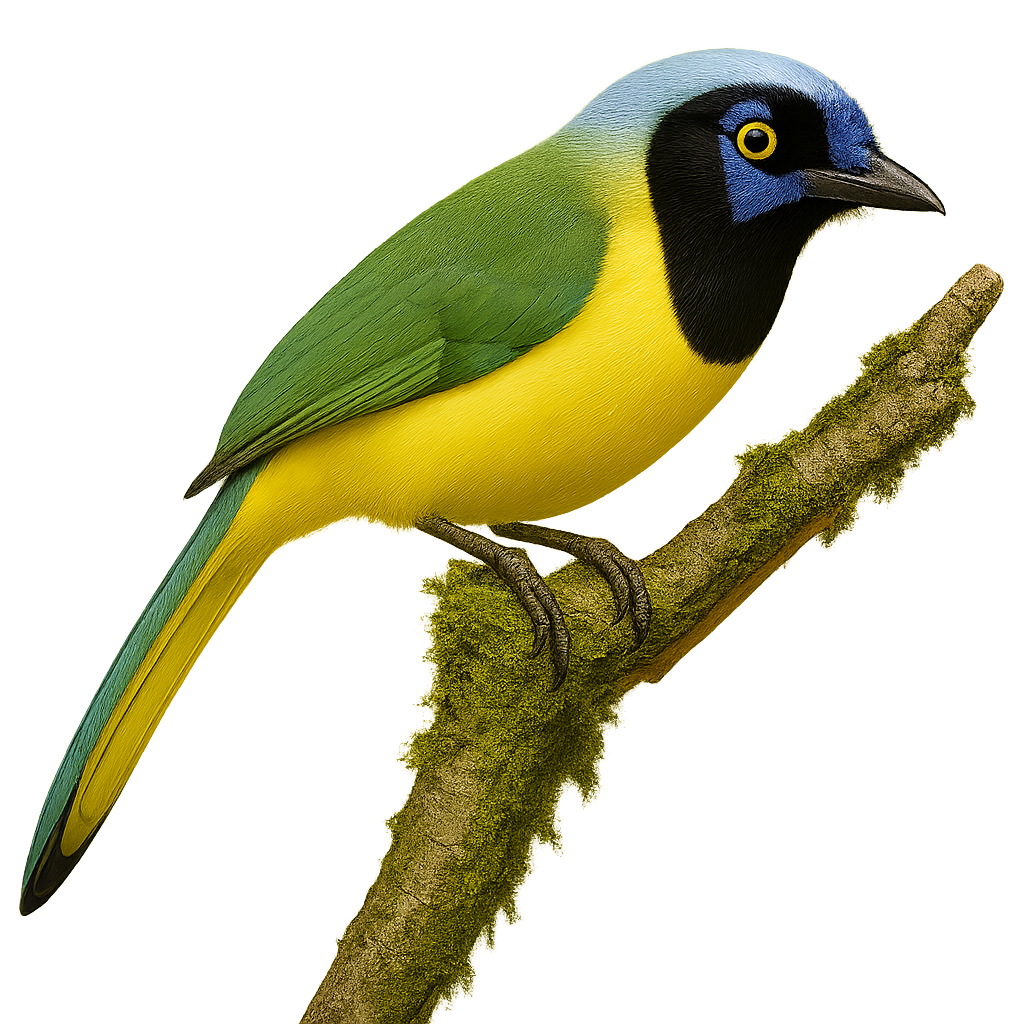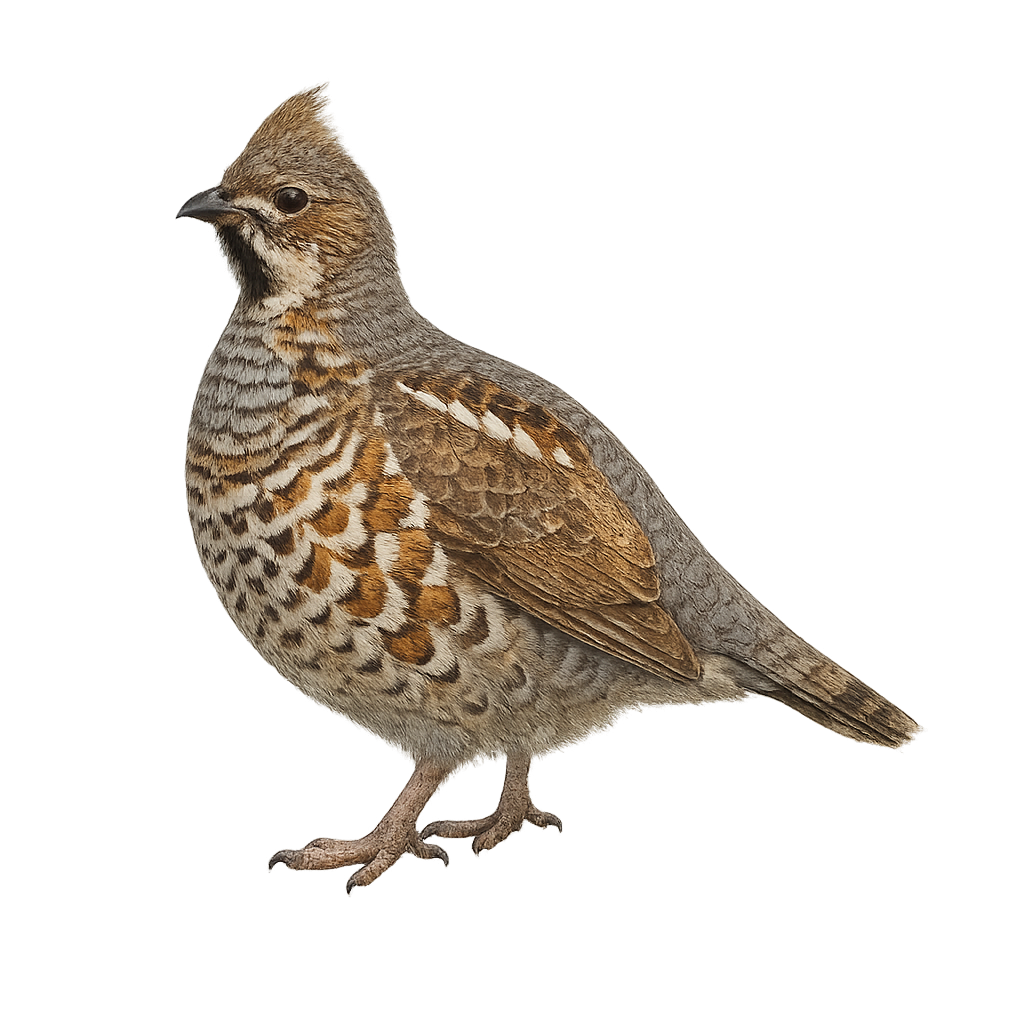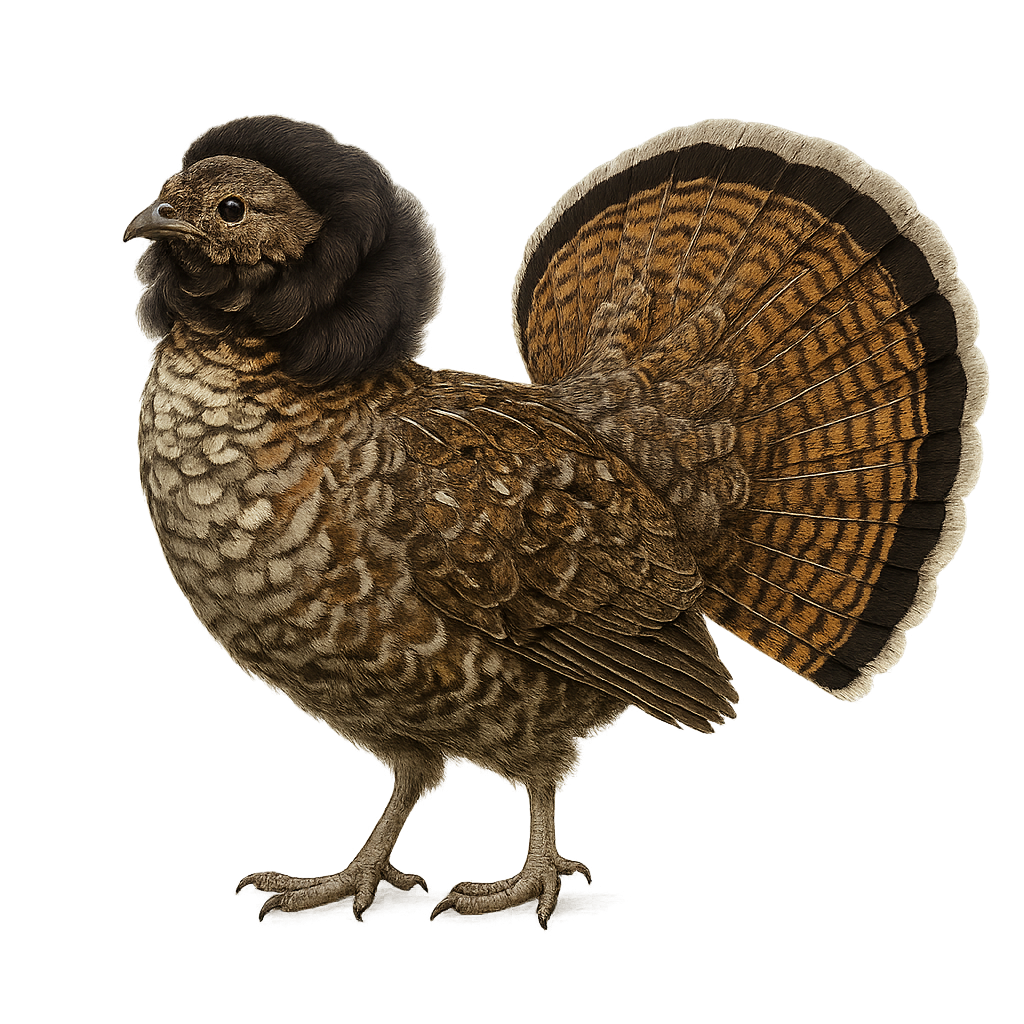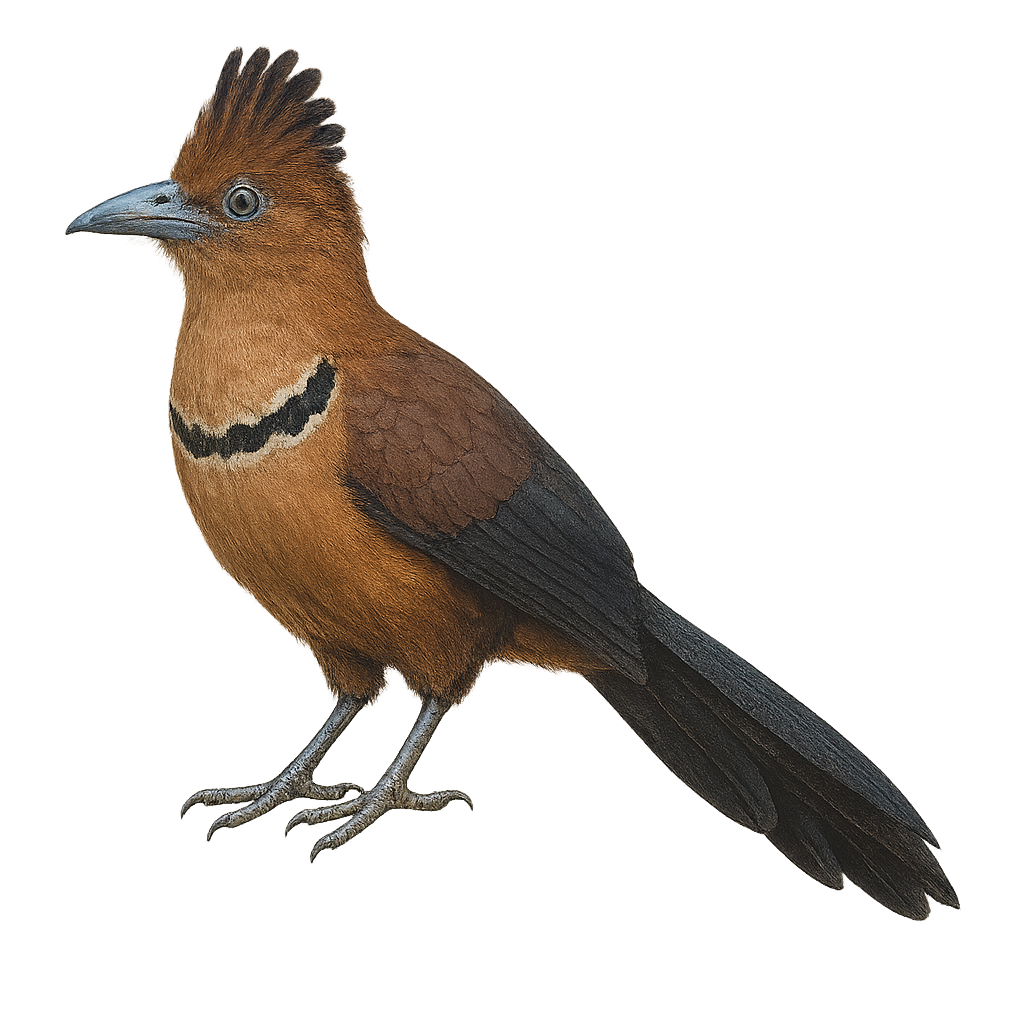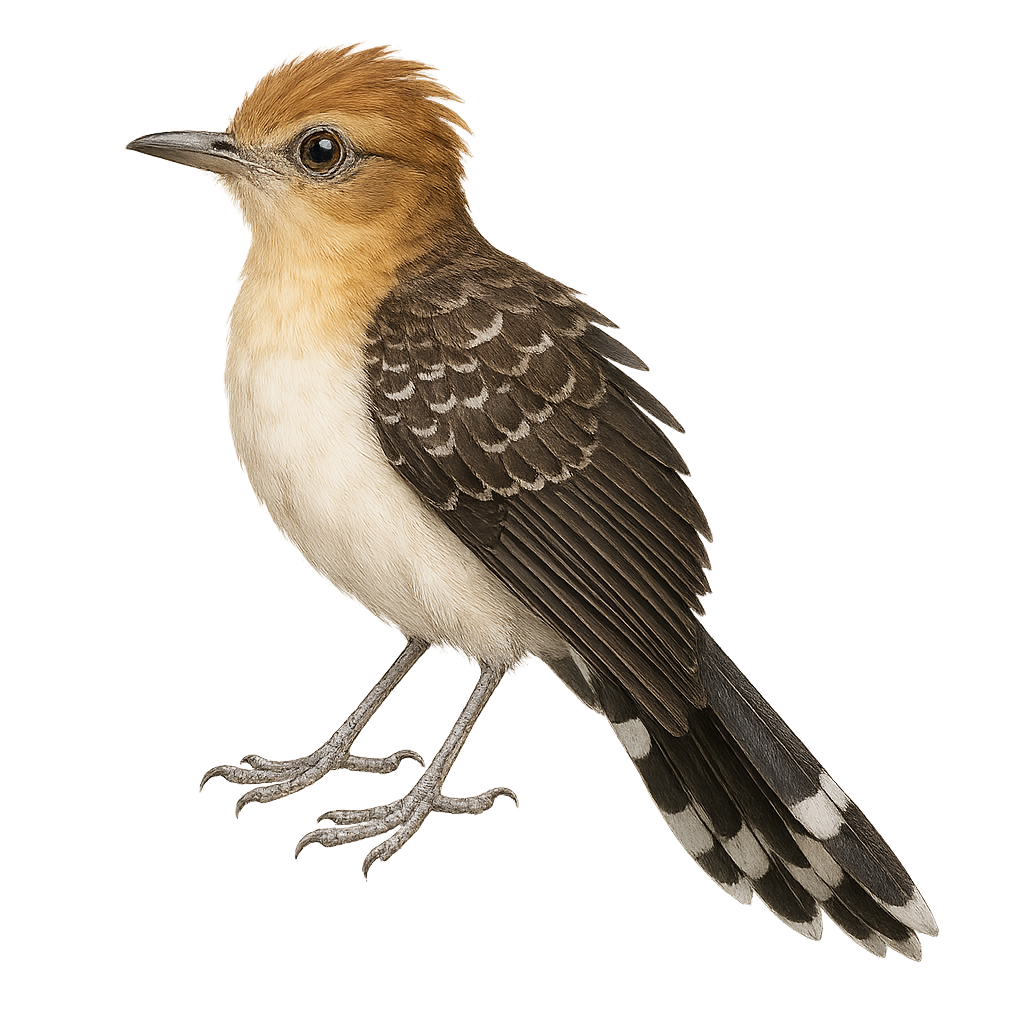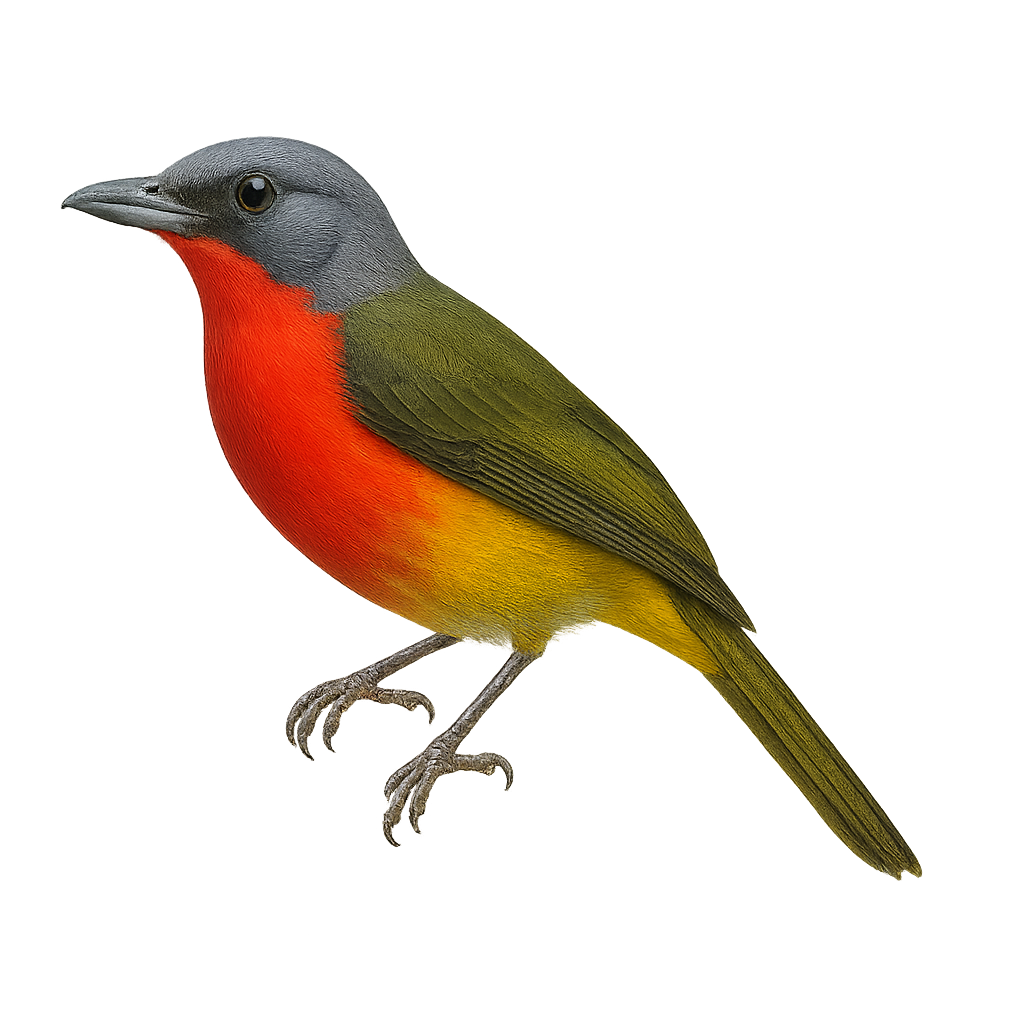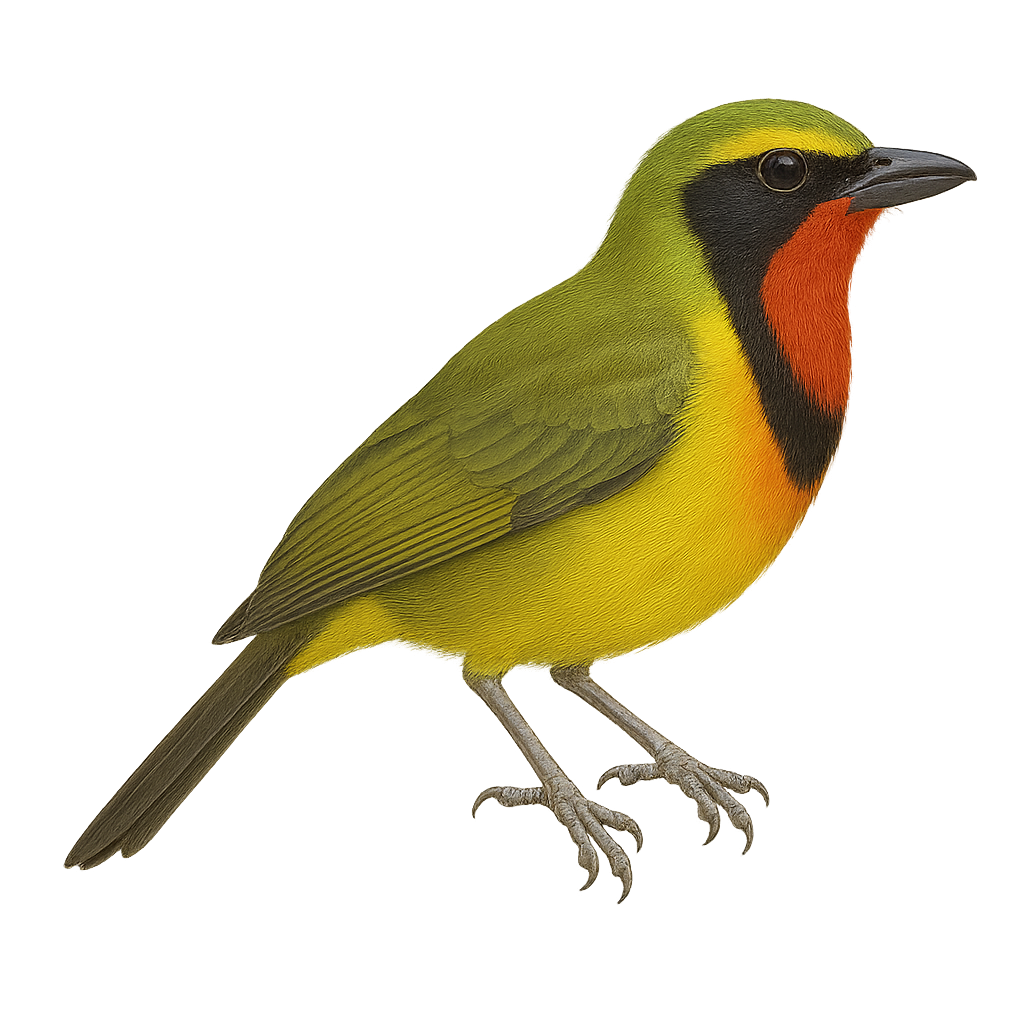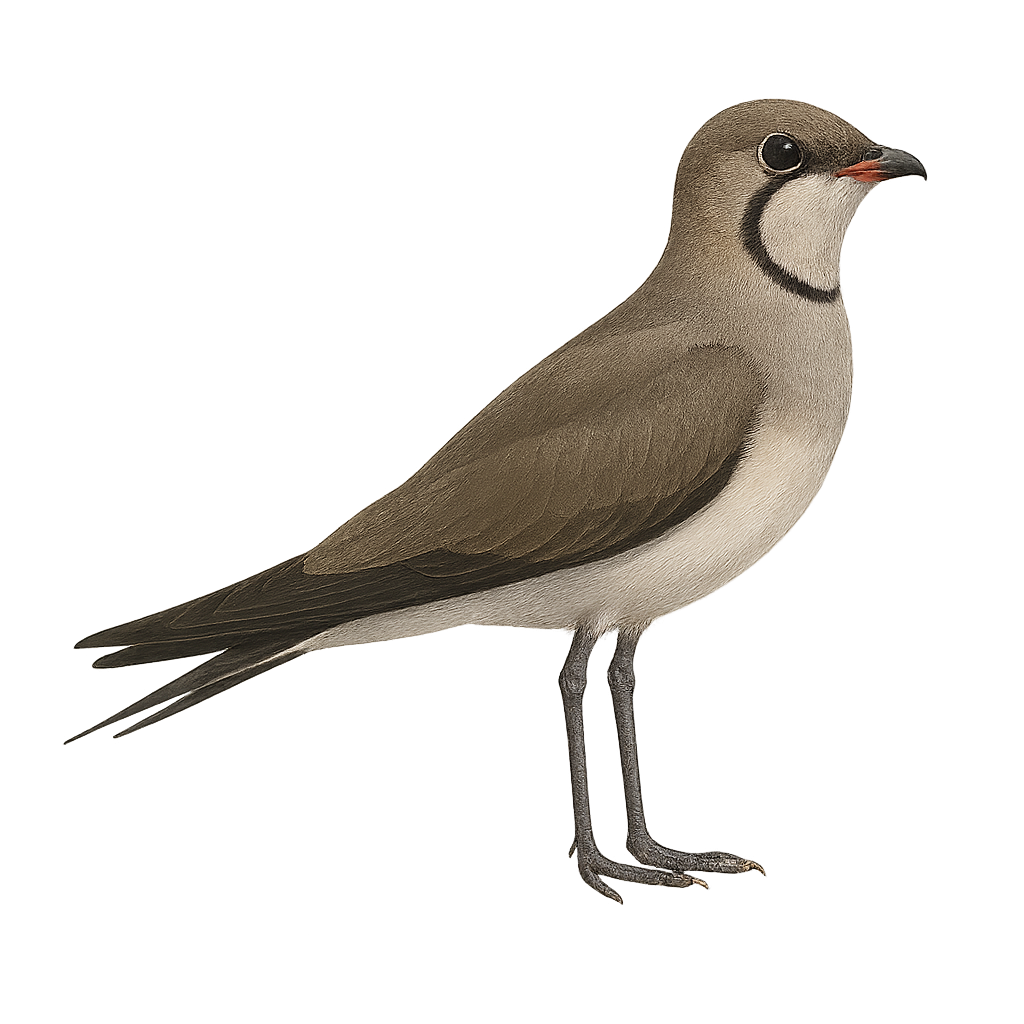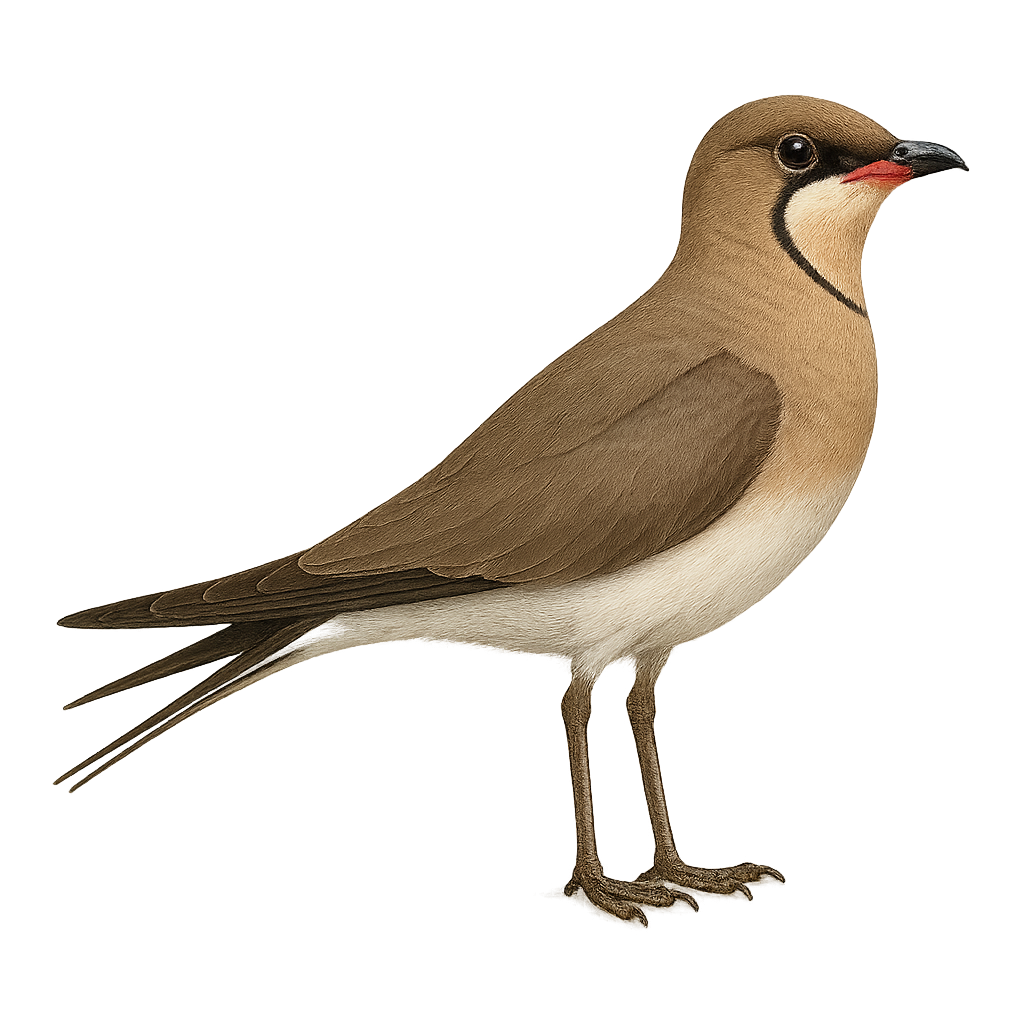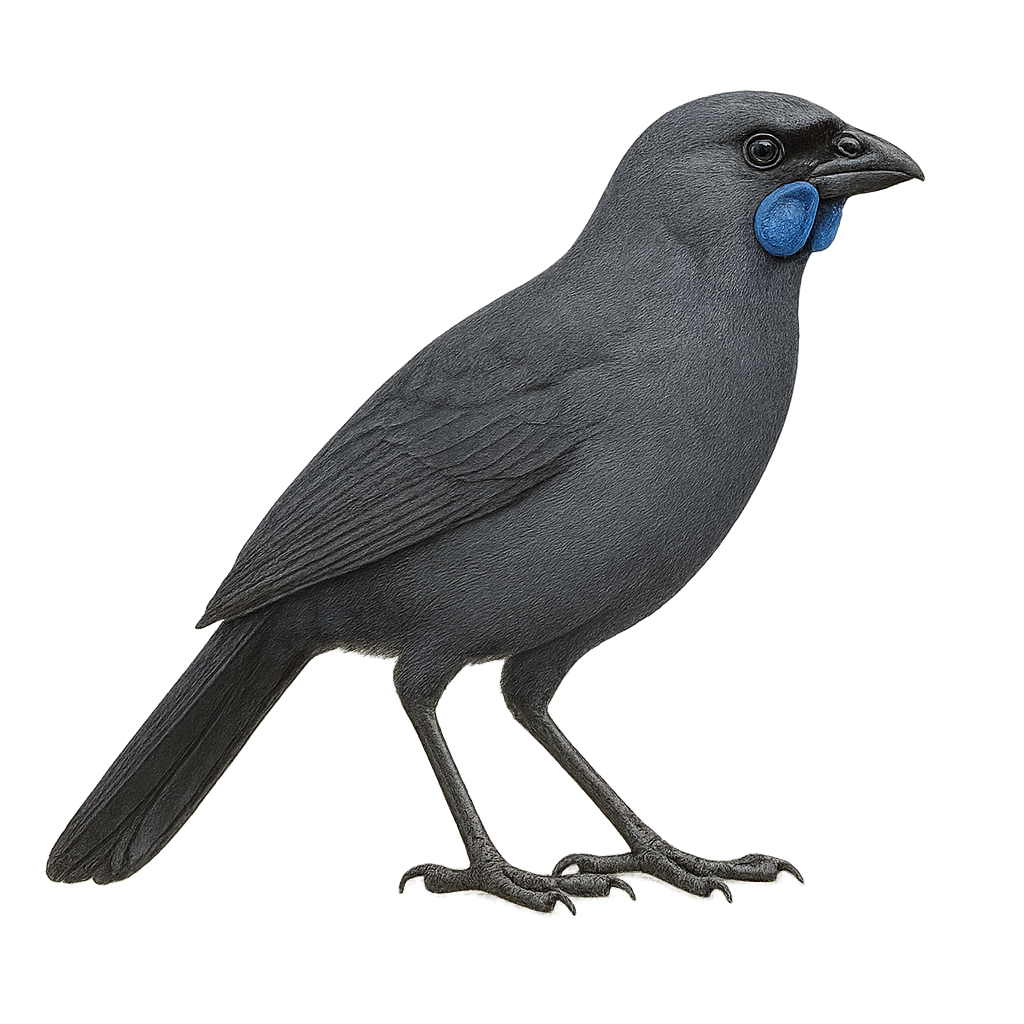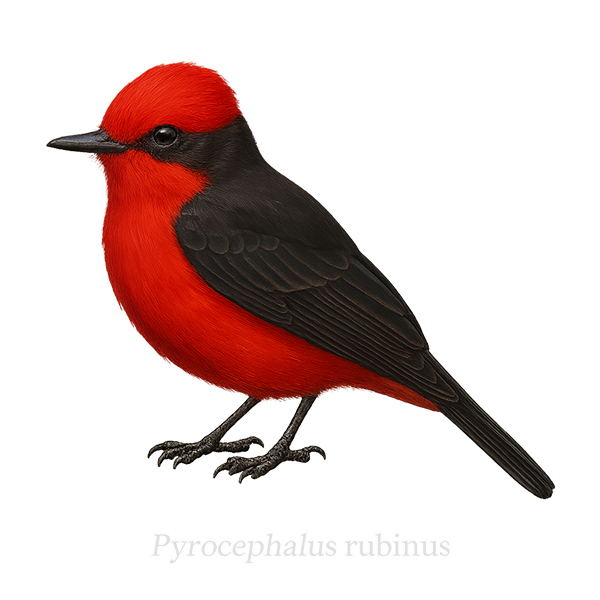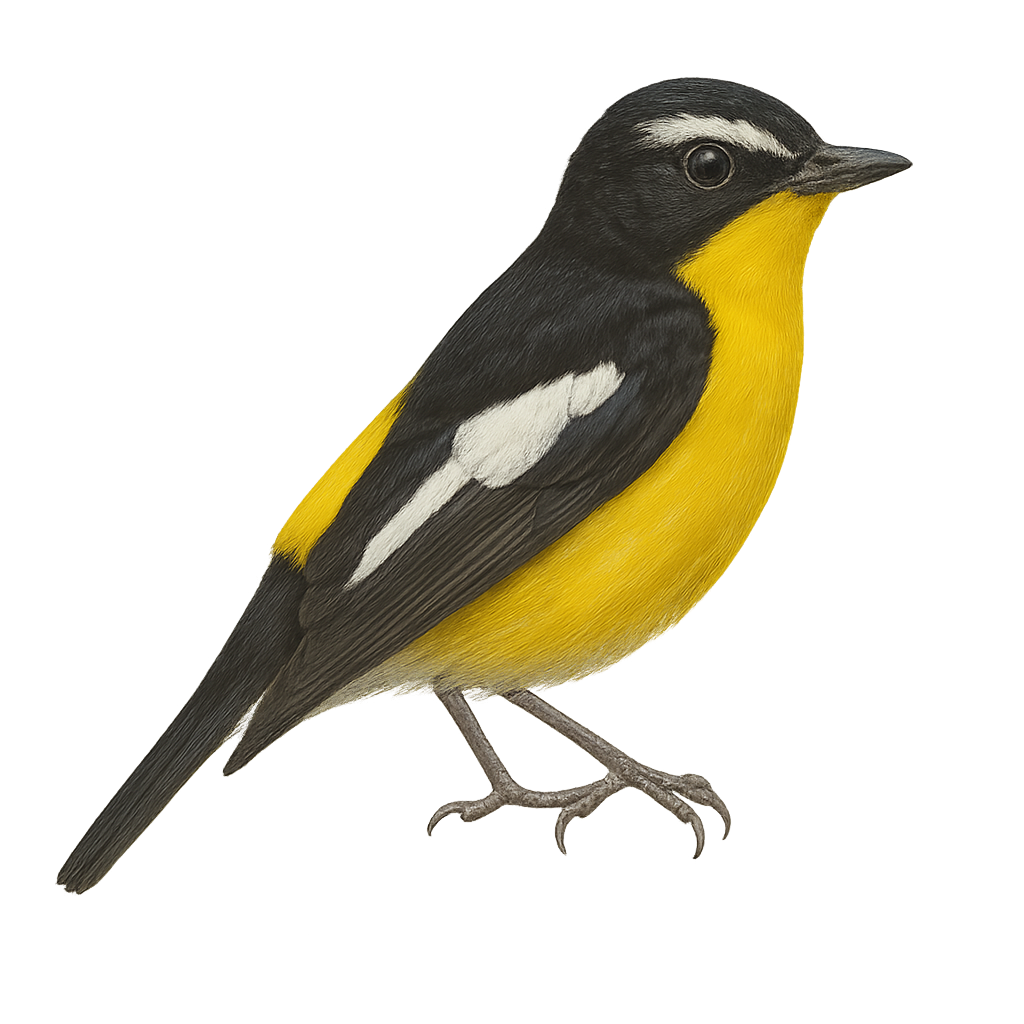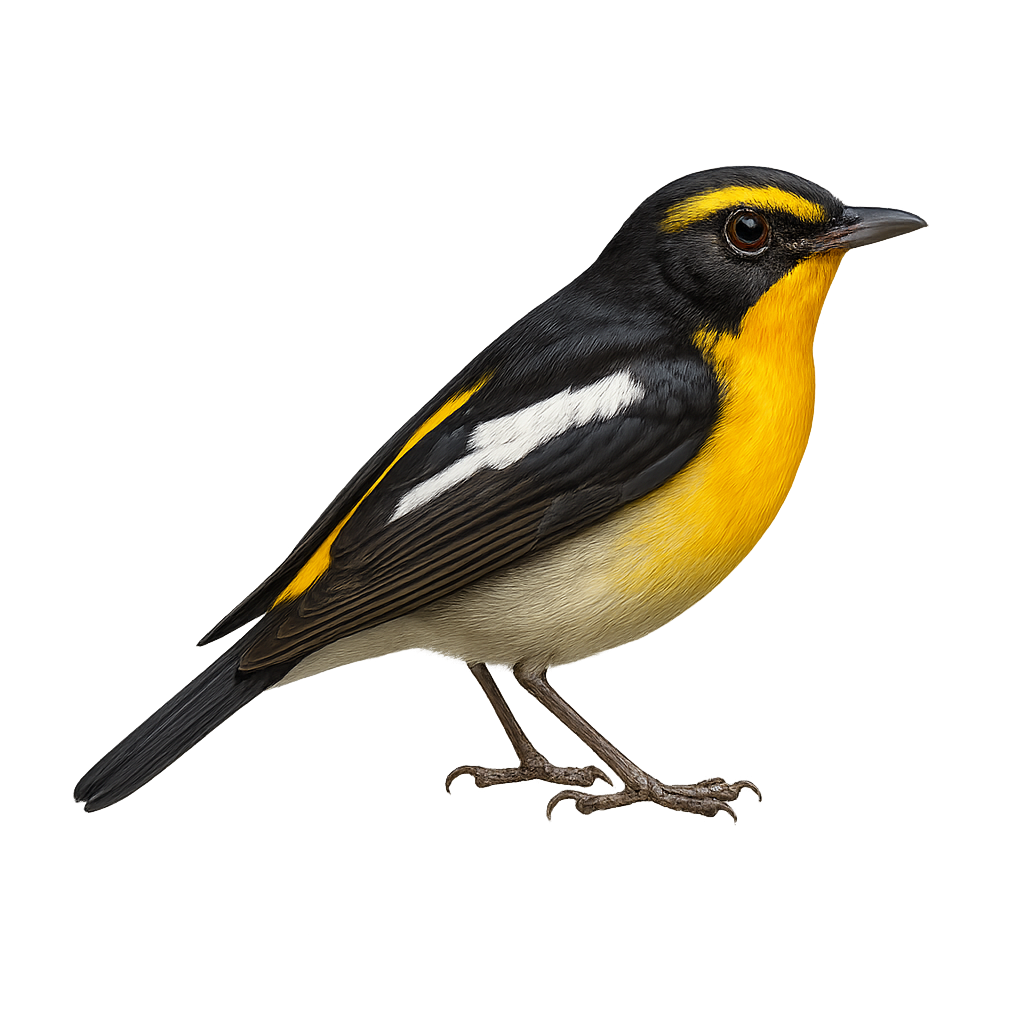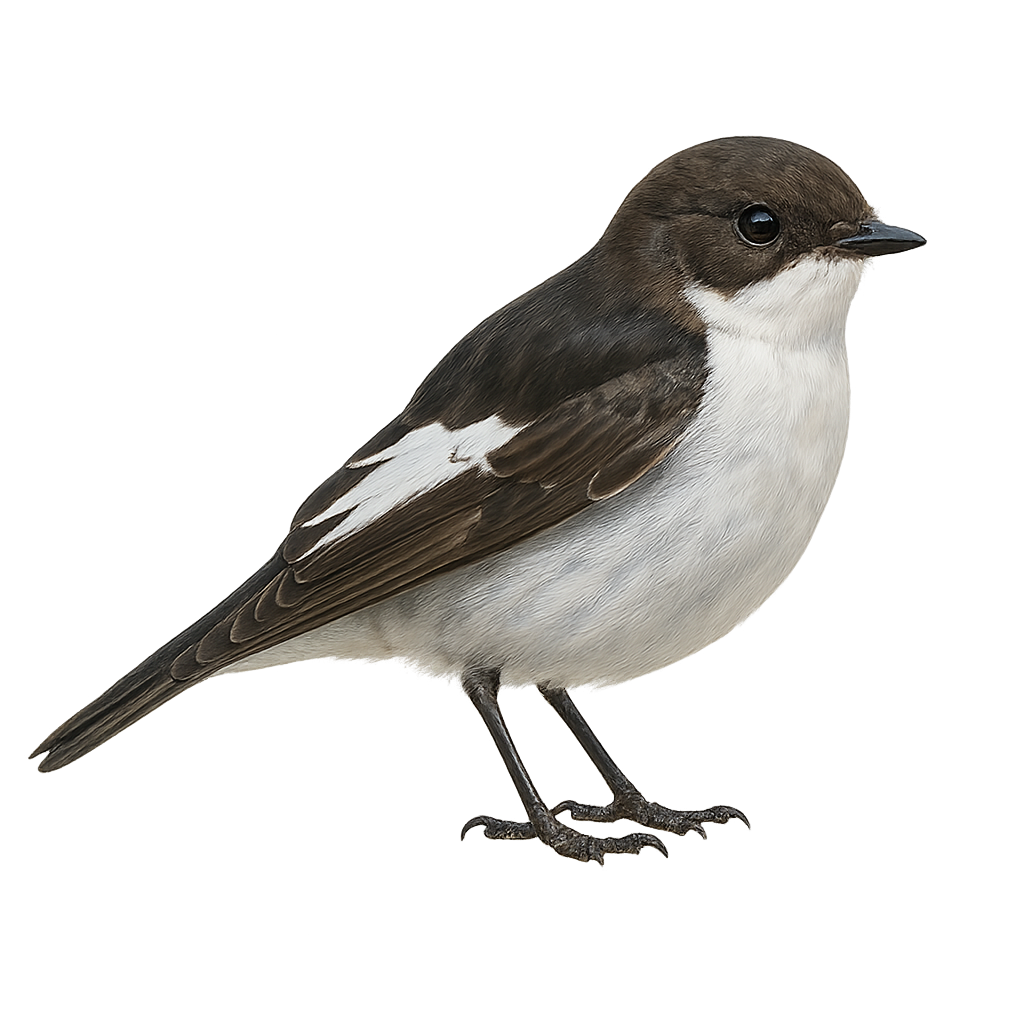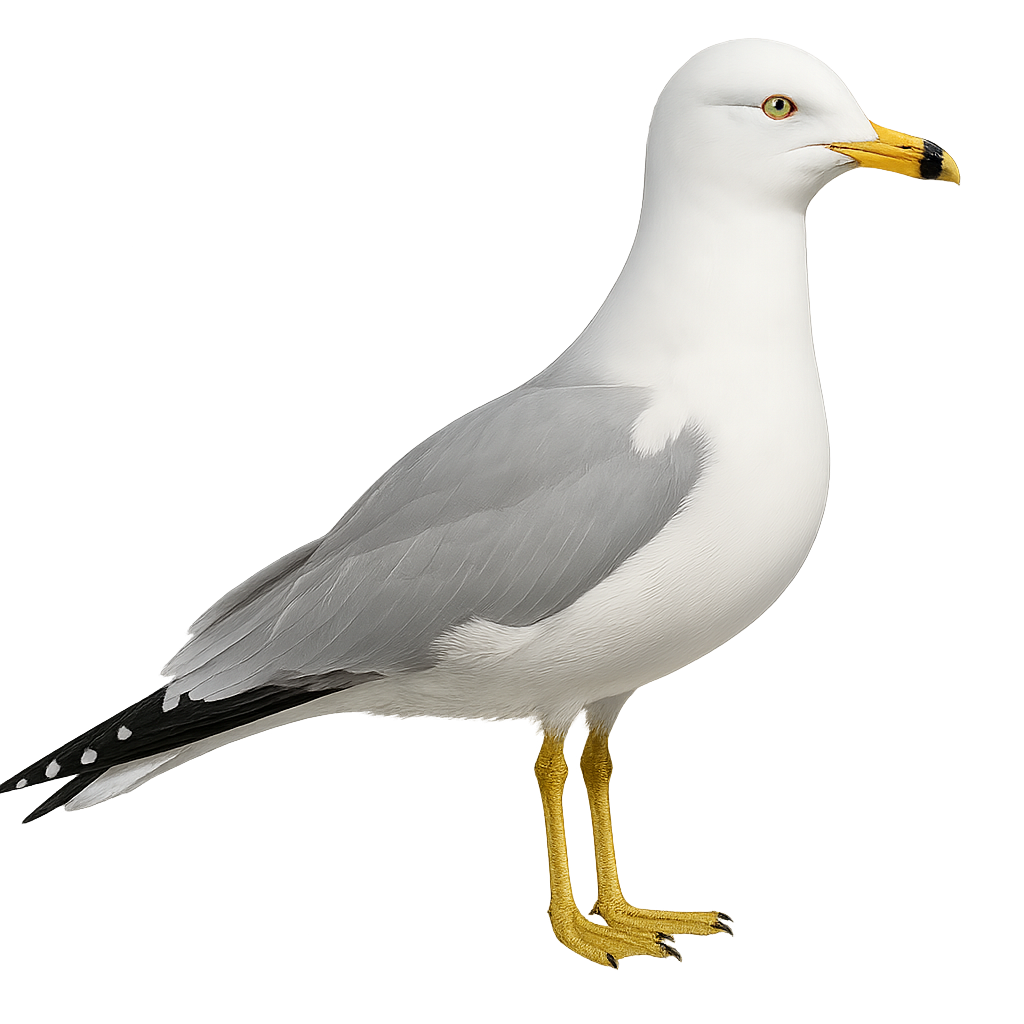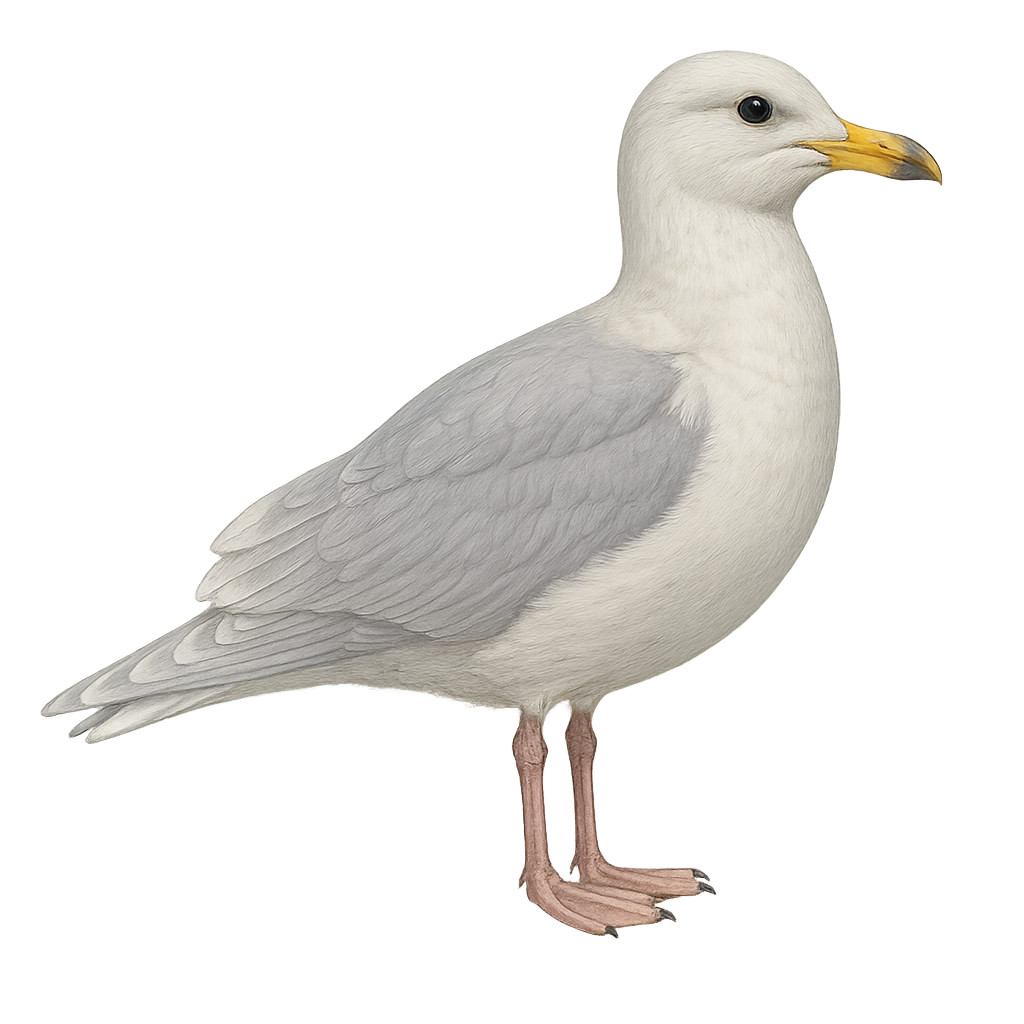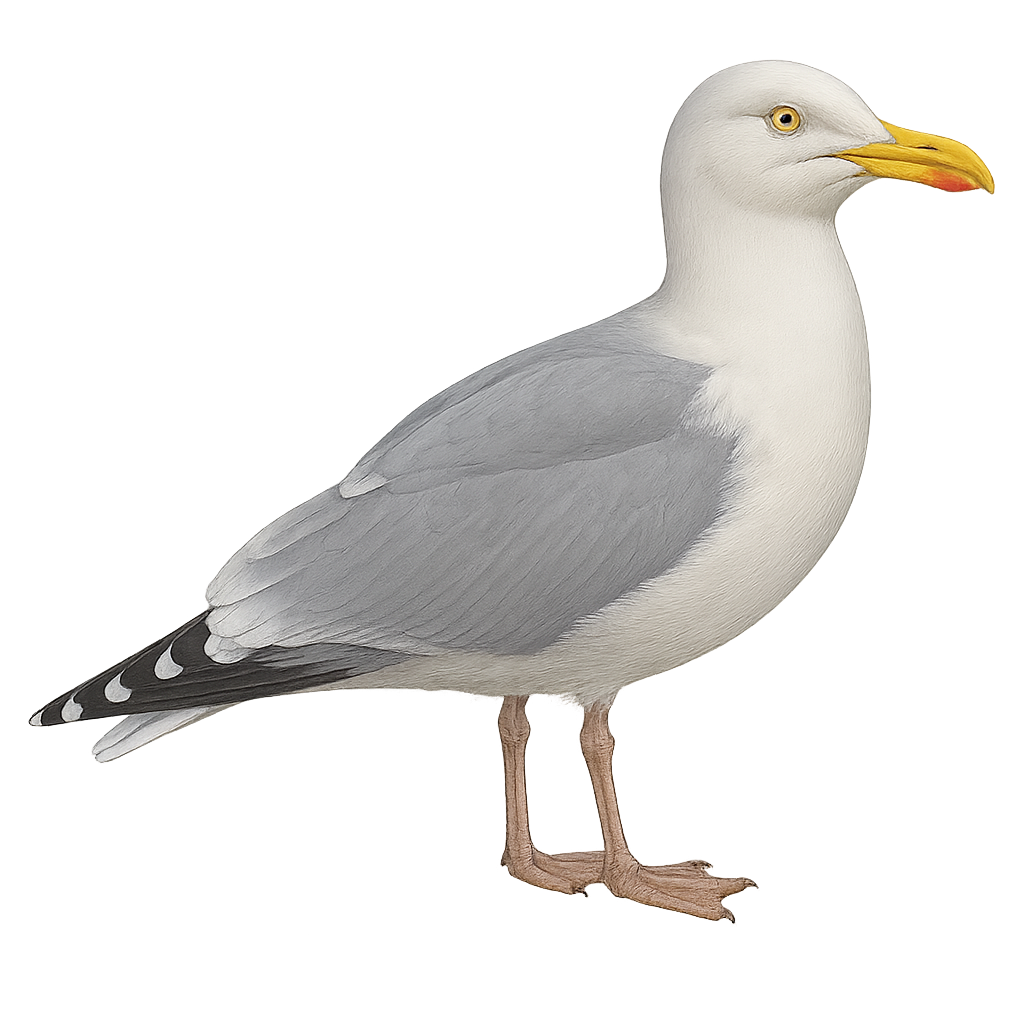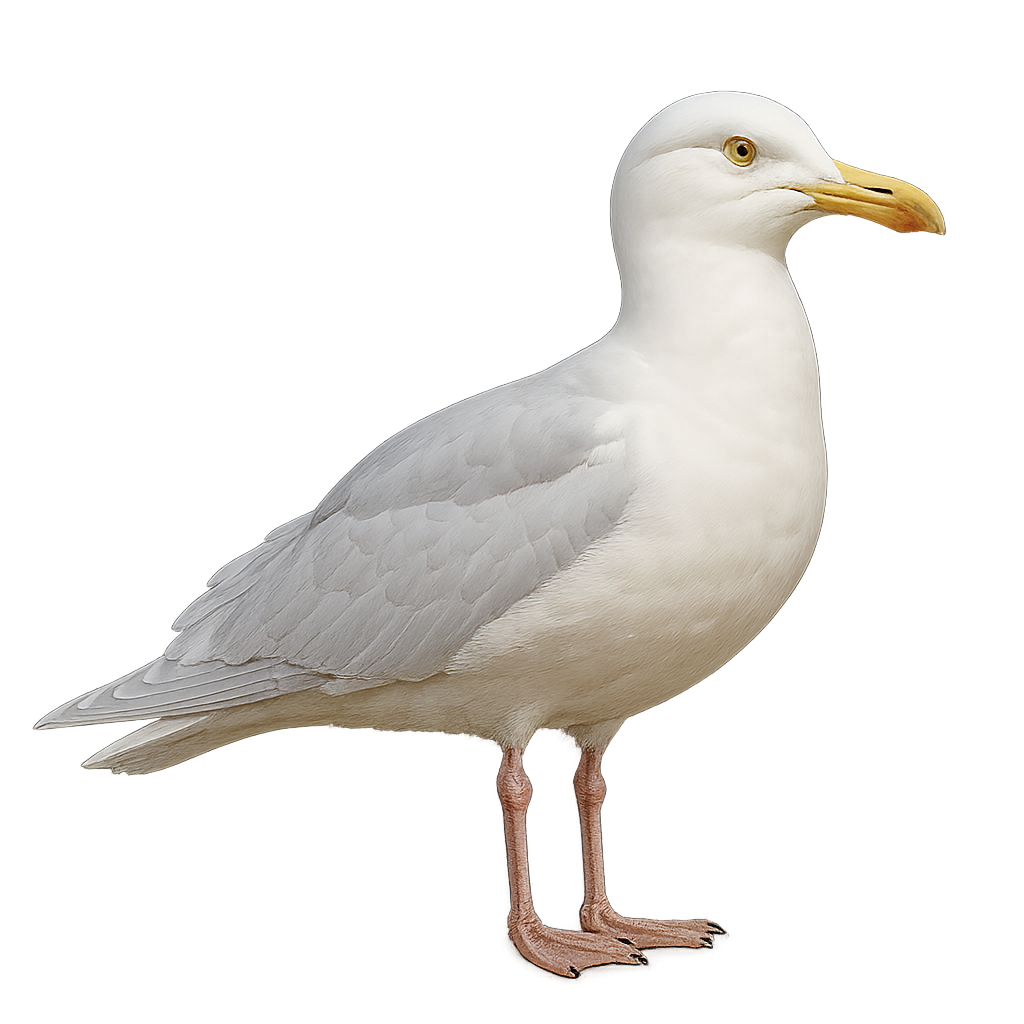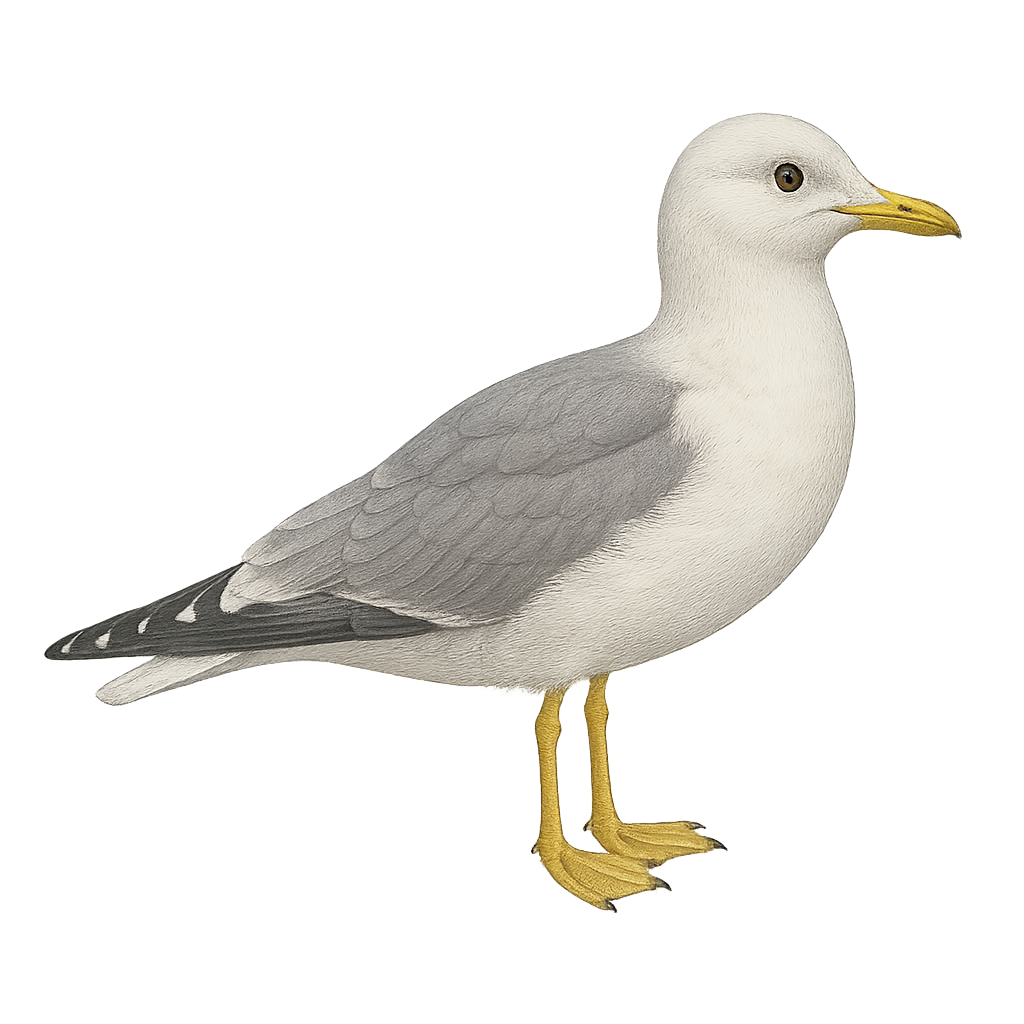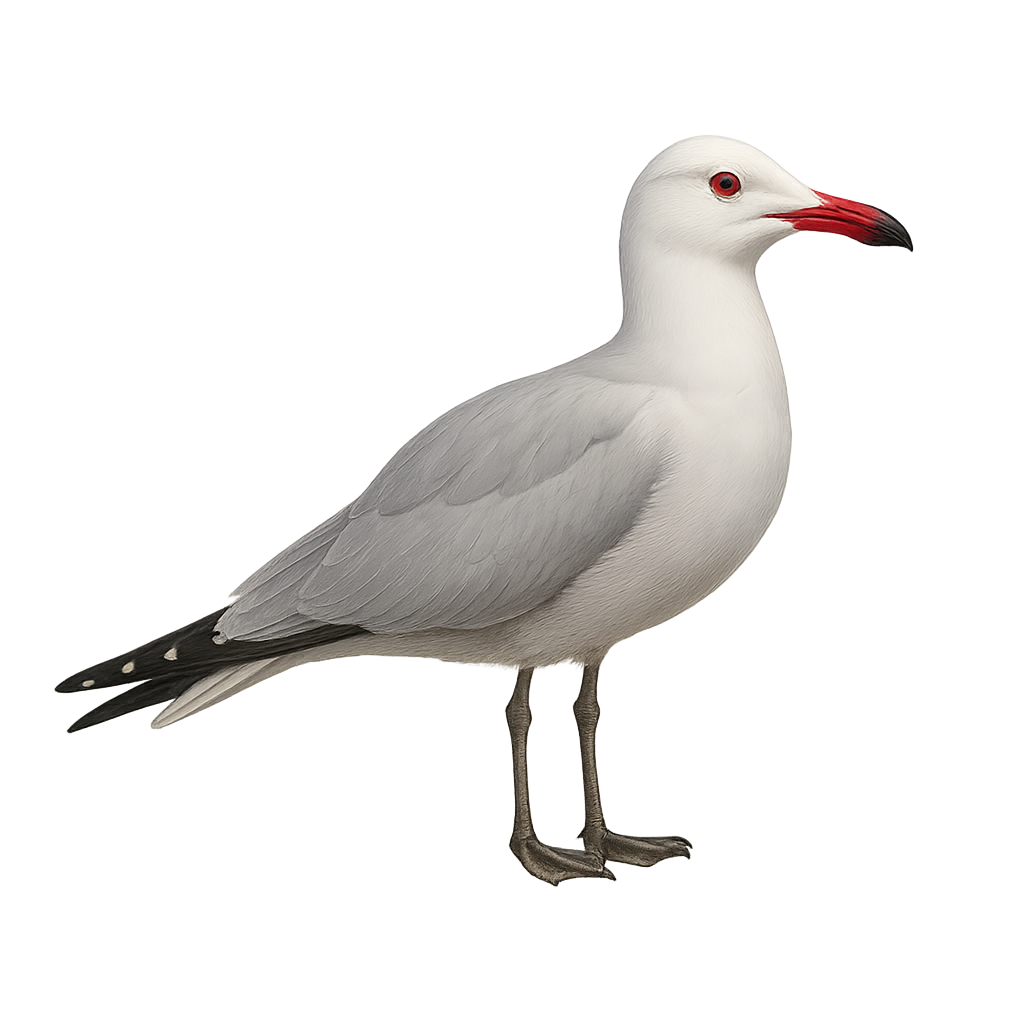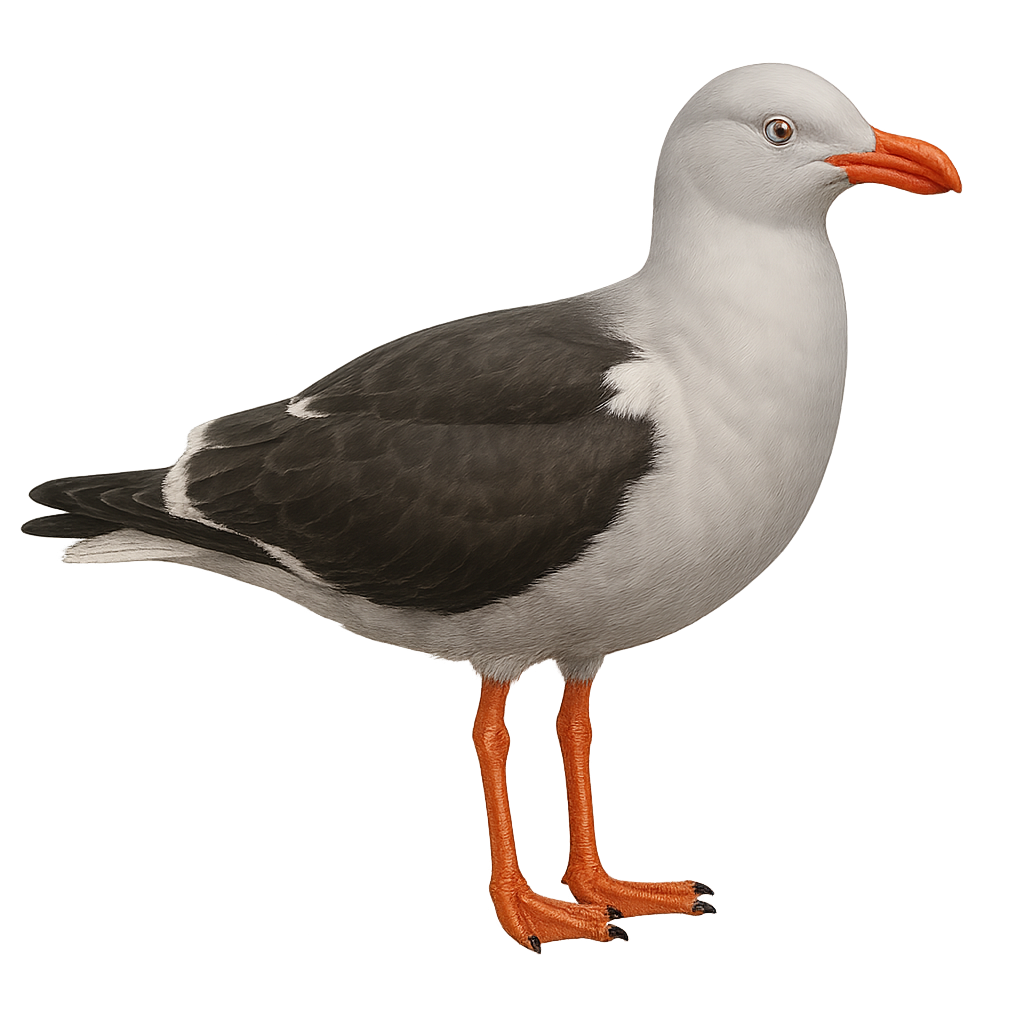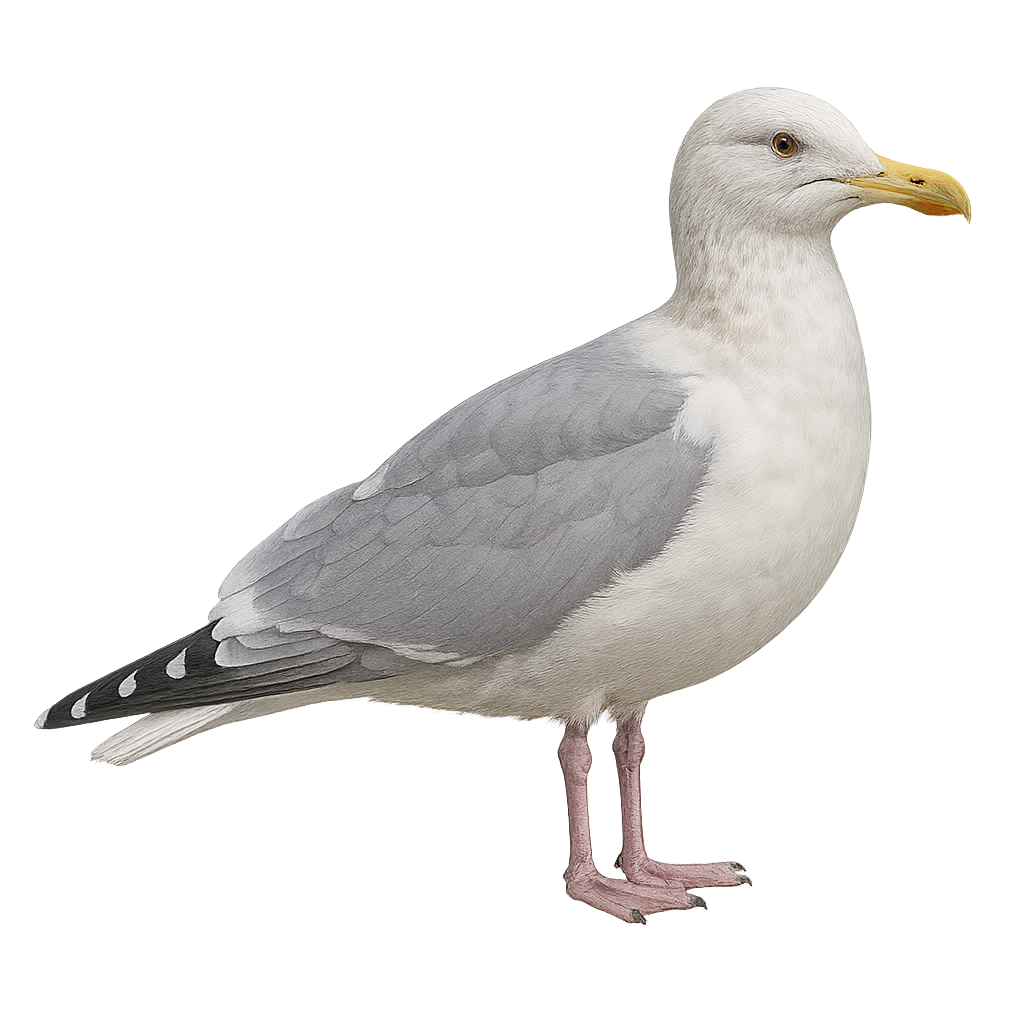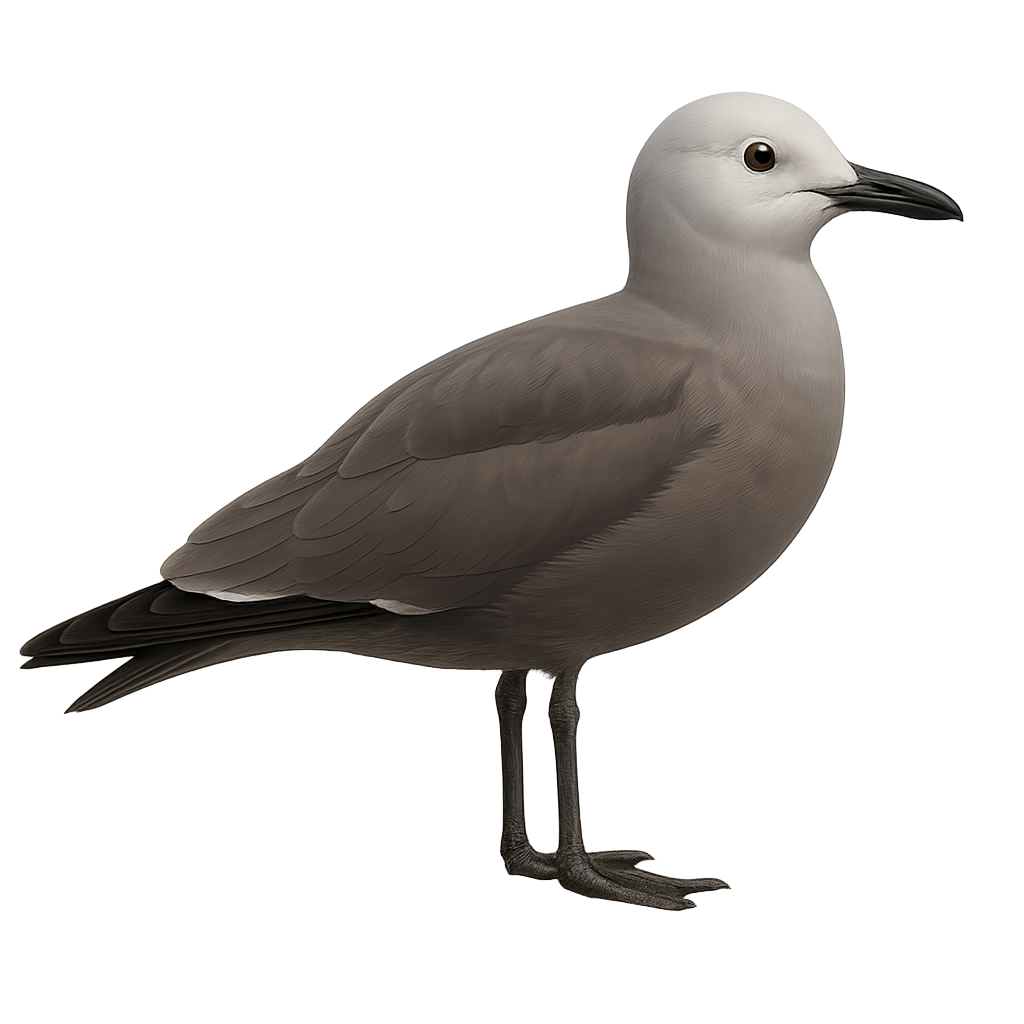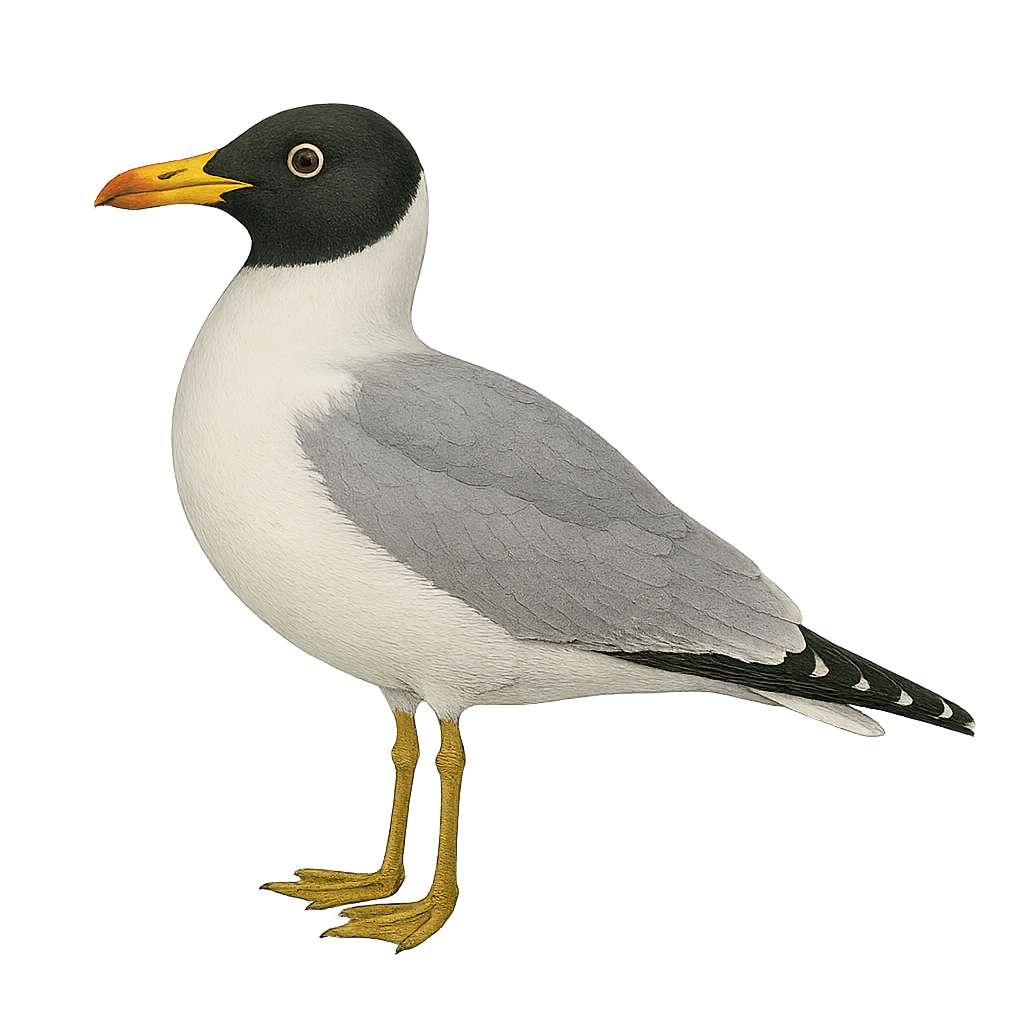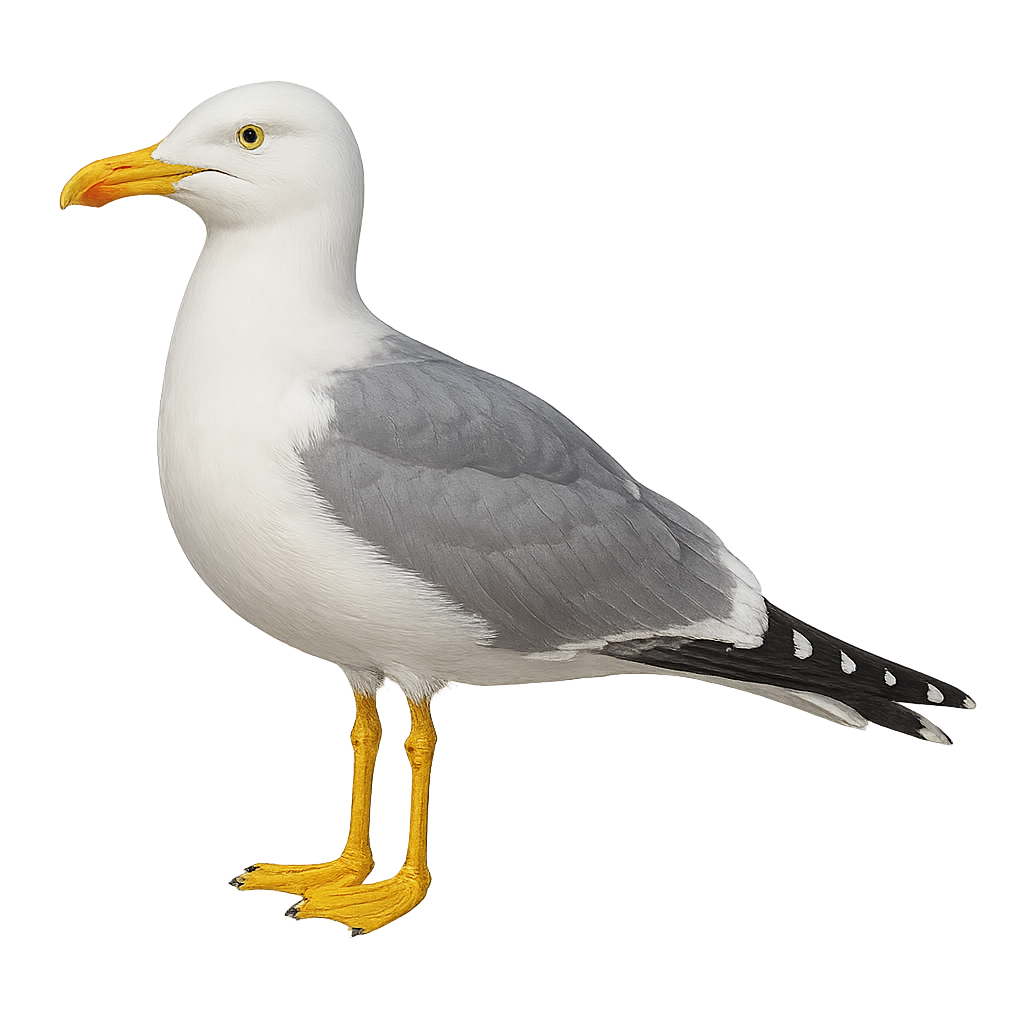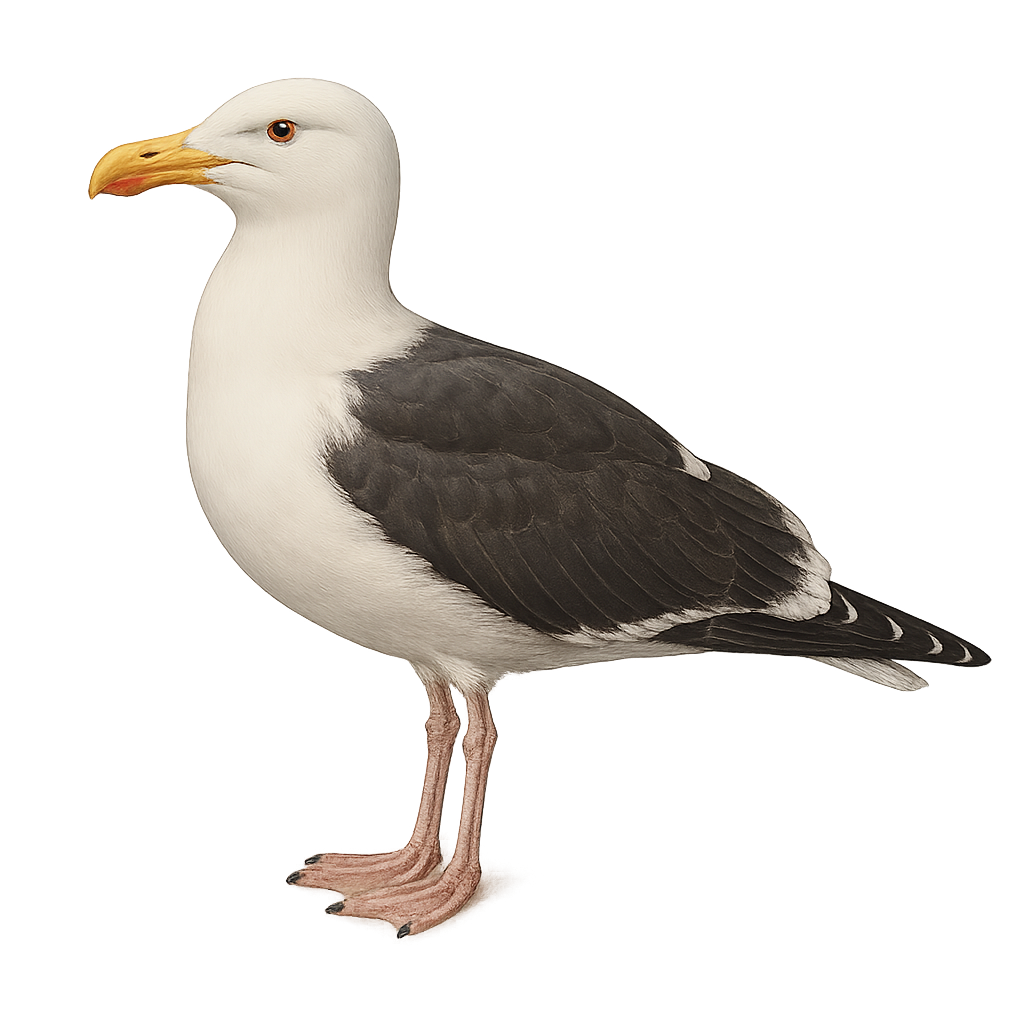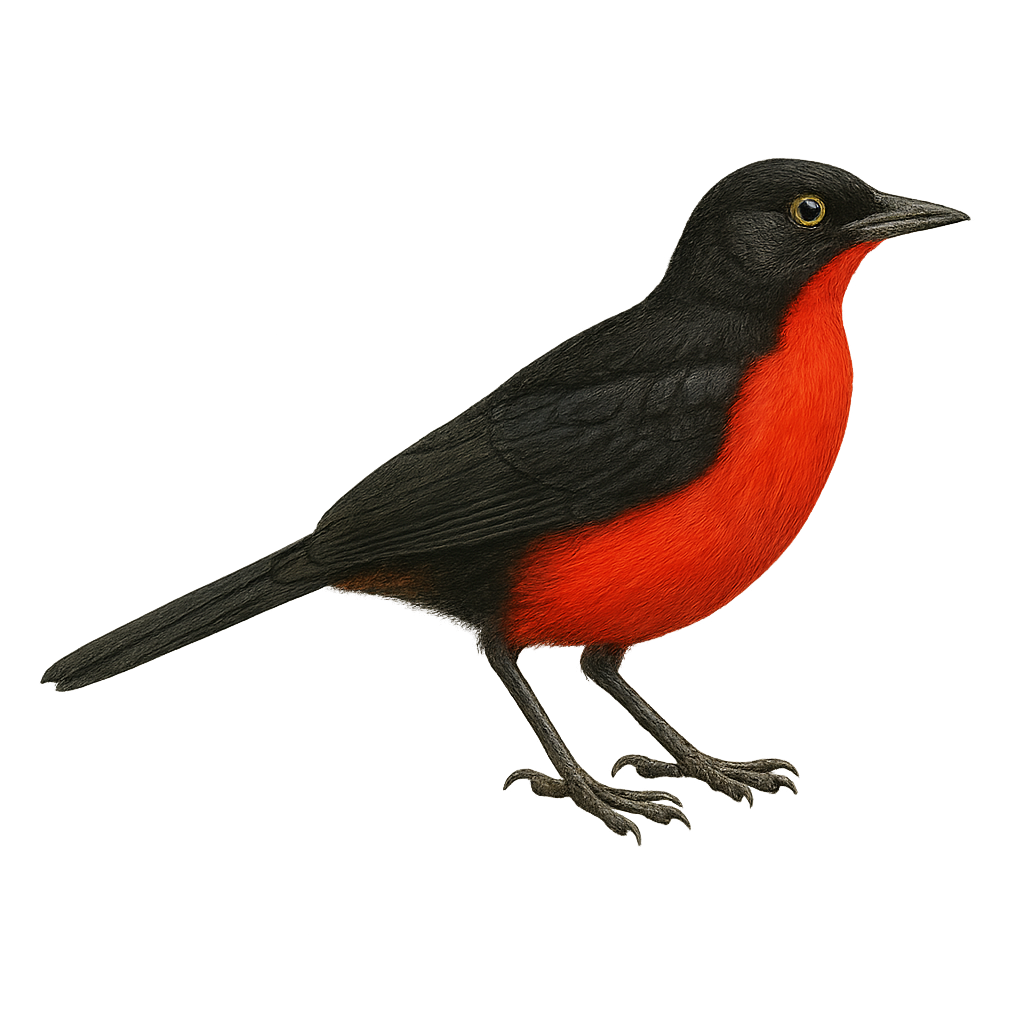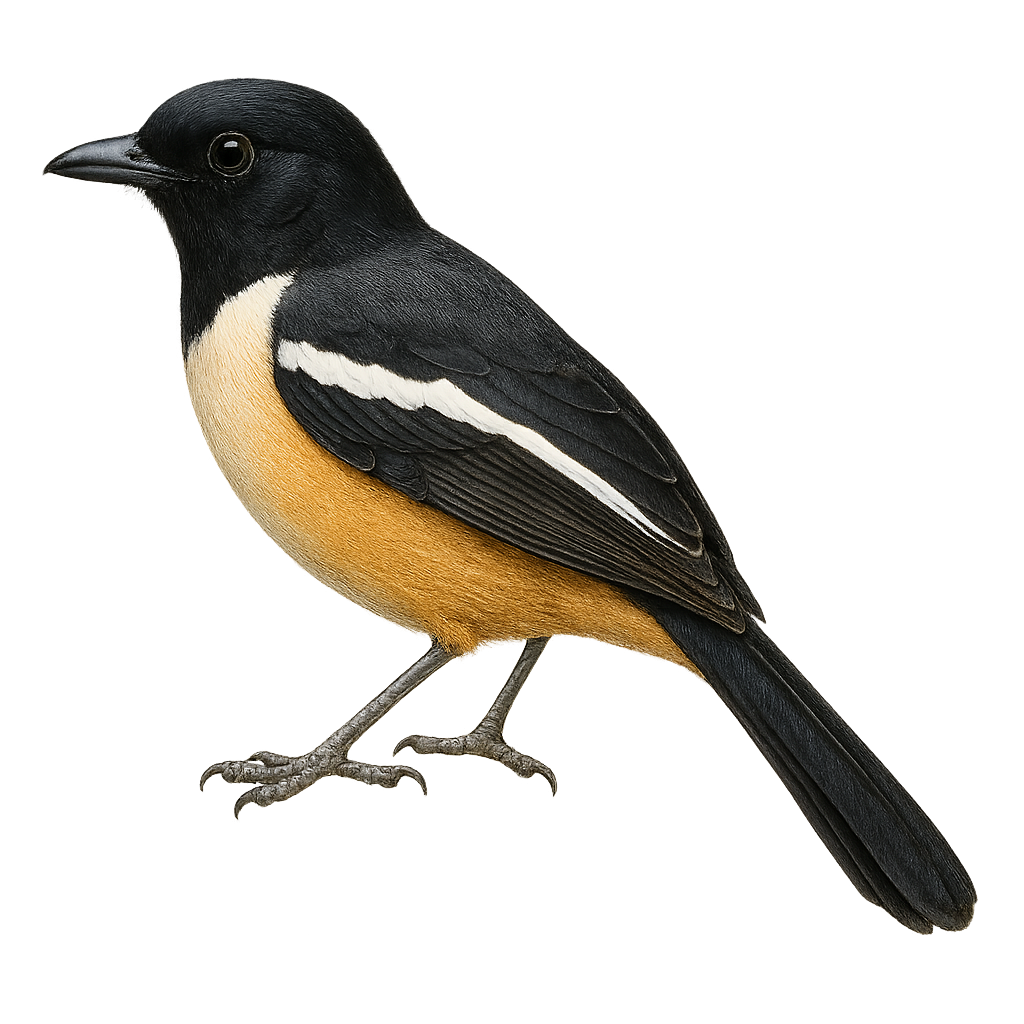The Green Jay, or Cyanocorax yncas, is a striking bird with vibrant plumage, primarily green with shades of blue and yellow. It inhabits the tropical and subtropical forests of Central and South America. This sociable bird lives in groups and is known for its intelligence and tool-using abilities. It primarily feeds on insects, fruits, and seeds. The Green Jay is also an excellent mimic of sounds, allowing it to communicate effectively with its peers. Its presence is often marked by its distinctive calls and agile flight through the dense canopy.
The Hazel Grouse is a small, terrestrial bird belonging to the pheasant family, easily recognizable by its subtly colored plumage and robust build. It measures about 40 to 45 cm in length and weighs between 500 and 700 g. Its plumage is primarily brown and gray, with patterns of spots and bars that allow it to blend effectively into the dense vegetation of forests. The Hazel Grouse primarily inhabits dense deciduous and mixed forests, where it feeds on seeds, berries, young shoots, and insects. Although it is rather discreet and difficult to spot, it is often heard through its soft, deep call. The Hazel Grouse is a fairly sedentary bird, but it may migrate short distances depending on weather conditions. It is also an emblematic bird of wooded areas and forest landscapes. While it is not endangered, the Hazel Grouse may be threatened by the loss of its forest habitat and the degradation of its breeding sites.
The Ruffed Grouse, Bonasa umbellus, is a medium-sized forest bird native to North America. It is easily identified by its mottled brown plumage, which provides excellent camouflage in its woodland habitat. Males are famous for their drumming display, a sound created by rapidly beating their wings, which echoes through the woods during the breeding season. This bird prefers mixed forests and dense wooded areas where it feeds on buds, leaves, and insects. Although generally solitary, the Ruffed Grouse can be seen in small groups outside the breeding season. Its ability to remain still and blend into its surroundings makes it a challenging subject for birdwatchers.
The Rufous-vented Ground Cuckoo, Neomorphus geoffroyi, is a rare and intriguing bird found in the tropical forests of Central and South America. It is recognizable by its rufous-brown plumage and distinctive long tail. This terrestrial bird prefers dense undergrowth where it moves stealthily in search of prey such as insects and small vertebrates. Although primarily ground-dwelling, it can fly short distances to escape predators. The Rufous-vented Ground Cuckoo is often heard before it is seen, thanks to its powerful and resonant calls. Its ability to blend into its environment makes it difficult to observe, adding to its mystery and appeal for birdwatchers.
The Pavonine Cuckoo is a mysterious and fascinating bird belonging to the Cuculidae family. It is primarily found in the dense tropical forests of South America, notably in Brazil, Bolivia, and Paraguay. This bird is recognizable by its brown and black plumage, with distinctive patterns reminiscent of peacock feathers, hence its name. The Pavonine Cuckoo is a discreet bird, often heard rather than seen, thanks to its melodious and repetitive song. It is known for its brood parasitism behavior, laying its eggs in the nests of other bird species. Although its conservation status is currently assessed as "least concern," deforestation continues to threaten its natural habitat.
The Fiery-breasted Bushshrike is a bird with vibrant plumage, primarily bright red on the chest and belly, contrasting with an olive-green back. This passerine, belonging to the Malaconotidae family, is known for its melodious and powerful song. It primarily inhabits the humid tropical forests of Central and West Africa, where it feeds on insects and small invertebrates. Although discreet, it can be observed in pairs or small groups. Its ability to blend into dense foliage sometimes makes it difficult to spot. Its conservation status is currently stable, but deforestation could threaten its habitats in the future.
The Green-backed Bushshrike, or Telophorus viridis, is a colorful and captivating bird primarily found in the wooded regions and savannas of sub-Saharan Africa. It is easily recognizable by its bright green plumage on the back, contrasting with shades of yellow and red on the belly and chest. This bird also features a distinctive black mask around the eyes, enhancing its piercing gaze. The Green-backed Bushshrike is a relatively discreet bird, often heard before seen, thanks to its melodious and varied song. It primarily feeds on insects but also enjoys small fruits. Although generally solitary, it can sometimes be observed in small family groups.
The Black-winged Pratincole, Glareola nordmanni, is a medium-sized migratory bird belonging to the Glareolidae family. It is recognizable by its light brown plumage, black wings, and forked tail. This bird is known for its ability to fly rapidly and perform impressive aerial acrobatics to catch insects in flight. It is primarily found in the steppes and open grasslands of Eastern Europe and Central Asia. The Black-winged Pratincole migrates to sub-Saharan Africa for the winter. It nests on the ground, often in loose colonies, and prefers habitats near water. Although its conservation status is concerning due to habitat loss, it remains relatively widespread in some regions.
The Collared Pratincole is an elegant bird, recognizable by its light brown plumage and forked tail. It features a distinctive black collar around its throat, contrasting with its white belly. Often seen in wetlands, grasslands, and marshes, it hunts insects in flight with remarkable agility. A migratory bird, it winters in sub-Saharan Africa after breeding in Europe and Asia. Known for its fast and graceful flights, often in groups, it emits sharp calls. Although its habitat is threatened by intensive agriculture and wetland drainage, it remains relatively widespread.
The North Island Kōkako, or Callaeas cinereus, is a bird endemic to New Zealand, specifically the North Island. This bird is easily recognizable by its ash-gray color and distinctive blue wattles on the sides of its beak. It primarily inhabits dense, humid forests where it feeds on fruits, leaves, and insects. Although capable of flight, it often prefers to move by hopping from tree to tree. The North Island Kōkako is a territorial and monogamous bird, forming pairs that vigorously defend their territory. Unfortunately, it is threatened by habitat loss and predation by introduced species, leading to a significant decline in its population.
The Pyrocephalus rubinus, or Vermilion Flycatcher, is a small bird with striking plumage, especially the male, which displays a bright red on its chest and head, contrasting with its dark brown back. This passerine is often seen perched on low branches, watching for insects to feed on. It is mainly found in South America, but can also be seen in parts of Central and North America. Its habitat ranges from open forests to semi-arid areas, including grasslands and riverbanks. The Vermilion Flycatcher is known for its spectacular courtship display, where the male performs acrobatic flights to woo the female.
The Yellow-rumped Flycatcher, or Ficedula zanthopygia, is a small passerine bird belonging to the Muscicapidae family. Males are easily identified by their striking black and yellow plumage, with a bright yellow belly and a distinctive white wing patch, while females are more subdued in brown and yellow tones. This migratory bird breeds in the temperate forests of East Asia, including China, Korea, and Russia, before migrating south to winter in Southeast Asia. It inhabits forests, parks, and gardens, feeding primarily on insects. Its melodious song and spectacular courtship displays make it a favorite among birdwatchers.
The Narcissus Flycatcher, Ficedula narcissina, is a small passerine bird in the Muscicapidae family, primarily found in East Asia. It is easily recognizable by its striking plumage: males have a black head with a bright yellow throat, a black back, and a white belly. Females are duller with brown and yellow hues. This migratory bird breeds in temperate and subtropical forests, preferring dense wooded habitats. It primarily feeds on insects, catching them in flight. The Narcissus Flycatcher is known for its melodious song, often heard during the breeding season. Although its conservation status is currently "least concern," deforestation poses a potential threat to its natural habitats.
The pied flycatcher is a small migratory passerine, 11–13 cm long, with striking black-and-white plumage: the male has a glossy black back and head contrasting with a white belly, while the female shows duller brownish tones. It inhabits open woodlands, forest edges, and parks, feeding mainly on insects and spiders caught in flight or gleaned from foliage. During the breeding season, the male performs aerial chases and sings to attract the female and defend his territory.
The Rufous-gorgeted Flycatcher, Ficedula hyperythra, is a small passerine bird belonging to the Muscicapidae family. It is mainly found in the montane forests of Southeast Asia, particularly in India, Nepal, Thailand, and China. This bird is distinguished by its characteristic rufous throat, contrasting with its bluish-grey back and white belly. It is often seen alone or in pairs, feeding on insects caught in flight. The Rufous-gorgeted Flycatcher is a migratory bird, moving to lower altitudes during winter. It is appreciated by birdwatchers for its melodious song and its ability to adapt to different forest habitats.
The Ring-billed Gull, Larus delawarensis, is a medium-sized bird easily identified by its yellow bill with a distinctive black ring. Its plumage is primarily white with gray wings and black wingtips. It often frequents coastal areas, lakes, and rivers, but can also be found in urban areas, where it adapts well to human presence. This gull is known for its piercing call and social behavior, often seen in large groups. Opportunistic, it feeds on fish, insects, small mammals, and human waste. Its ability to adapt to various environments makes it a widely distributed species in North America.
The Iceland Gull, or Larus glaucoides, is a medium-sized seabird primarily found in Arctic and subarctic regions. It is notable for its pure white plumage and pale grey wings, lacking the black markings typical of many other gulls. During the breeding season, it nests on coastal cliffs and rocky islands, often in mixed colonies with other gull species. Its diet is varied, including fish, crustaceans, and human waste. As a migratory bird, it winters further south along the Atlantic coasts of Europe and North America. Its flight is graceful and powerful, and it emits distinctive high-pitched calls.
The herring gull is a large seabird in the family Laridae, up to 66 cm long with a wingspan of up to 1.4 m. It has a white head, body and tail, grey back and wings with black wingtips marked with white spots, and pink legs. It breeds in coastal colonies on islands, cliffs and urban roofs, foraging on fish, crustaceans, invertebrates and human refuse. The breeding season runs from April to June, when it lays 2–3 eggs in a simple ground scrape.
The Glaucous Gull is a large seabird, easily recognizable by its imposing size and distinctive plumage. It measures between 60 and 70 cm in length, with a wingspan of 140 to 150 cm, and weighs between 1.2 and 2.5 kg. Its plumage is primarily white, with light gray wings and black markings on the tips of the feathers. The head and beak are generally yellow, with a red band on the beak. This gull is an excellent swimmer and an opportunistic hunter, feeding mainly on fish, crustaceans, and human waste when near urban areas or ports. The Glaucous Gull primarily inhabits coastal regions of the Arctic and North Atlantic and is well adapted to cold, marine environments. Although it is not endangered, it faces risks related to pollution, habitat loss, and human disturbances.
The common gull, or Larus canus, is a medium-sized seabird, identifiable by its light grey back and white underparts. Its wings feature a black band with distinctive white spots. The bill is yellow with a greenish tip, and its legs range from green to yellow. It inhabits coasts, lakes, and rivers, often in colonies. An opportunistic feeder, it consumes fish, invertebrates, and human waste. Partially migratory, it moves southward in winter. Its population is stable, though sensitive to environmental changes. The common gull is a social bird, often seen in groups, playing a crucial role in coastal ecosystems.
The Audouin's Gull, Larus audouinii, is a rare and elegant gull species primarily found in the Mediterranean basin. Recognizable by its pure white plumage, light gray wings, and bright red bill with a black tip, it stands out with its slender silhouette and graceful demeanor. This gull mainly nests on rocky islands and isolated coasts, forming dense colonies. It primarily feeds on fish, skillfully diving into the water to catch its prey. Although its population experienced a significant decline in the 20th century, conservation efforts have led to some stabilization. However, it remains vulnerable to human disturbances and environmental changes.
The Dolphin Gull, scientifically known as Leucophaeus scoresbii, is a medium-sized gull species primarily found along the coastal regions of South America, particularly in Patagonia and the Falkland Islands. It features a predominantly grey plumage with darker shades on the wings and back, while its head is white. This gull is notable for its bright red bill and pinkish legs. Often seen in small groups, it feeds on fish, crustaceans, and marine debris. Known for its opportunistic behavior, it frequently approaches inhabited areas in search of food.
The Thayer's Gull, Larus thayeri, is a medium-sized seabird belonging to the Laridae family. It is characterized by its pale gray plumage on the back and wings, contrasting with a white belly. Its bill is yellow with a red spot on the lower mandible, and it has pink legs. Found mainly in the Arctic and subarctic regions of North America, particularly in Canada and Alaska, it nests on coastal cliffs and islands. As a migratory bird, it winters along the Pacific coast from southern Alaska to California. An opportunistic feeder, it consumes fish, invertebrates, and human waste. Although often confused with other gull species, it is recognized for its graceful flight and distinctive calls.
The Grey Gull, or Leucophaeus modestus, is a medium-sized coastal bird primarily found along the Pacific coasts of South America. It is characterized by its uniform ash-grey plumage and black legs and bill. Unlike other gulls, it often nests far from the coast, in deserts or arid areas, which is unusual for a seabird. It feeds mainly on small fish, crustaceans, and invertebrates found in shallow waters. The Grey Gull is also known for its seasonal migrations, moving north during the austral winter. Although its conservation status is currently of concern, it is vulnerable to human disturbances and environmental changes.
The Pallas's Gull is a large seabird, easily identifiable by its distinctive black head and bright yellow bill. It primarily inhabits the lakes and rivers of Central Asia but migrates to the southern coasts of Asia and the Middle East during winter. Its plumage is mostly white with grey wings and black wingtips. It feeds mainly on fish but also consumes crustaceans and small mammals. Its call is harsh and loud, often heard when defending its territory. The Pallas's Gull nests in colonies on islands or sandbanks, typically laying two to three eggs.
The yellow-legged gull is a large seabird found primarily along the Mediterranean and Atlantic coasts. It is easily recognized by its white plumage, gray wings, and yellow legs. This gull is omnivorous and feeds on fish, marine invertebrates, and food waste, making it an opportunist. It is also known for its nesting behaviors on rocky coastlines and cliffs and can occasionally be seen in urban areas.
The Great Black-backed Gull, Larus marinus, is the largest gull, with an impressive wingspan of up to 1.7 meters. Its plumage is mainly white with a black back, and it has pink legs. Found primarily along the North Atlantic coasts, it feeds on fish, smaller birds, and carrion. Opportunistic, it often ventures into ports and landfills for food. Although often solitary, it can be seen in groups during nesting. Its call is loud and harsh, typical of gulls. During the breeding season, it builds its nest on cliffs or rocky islands, usually laying three eggs.
The Laniarius erythrogaster, commonly known as the Black-headed Gonolek, is a striking bird with vivid red underparts and a black head and back. It primarily inhabits the savannas and open forests of sub-Saharan Africa. This bird is often seen in pairs, producing melodious duets. It measures about 20 cm in length and feeds mainly on insects and small invertebrates. Although relatively discreet, its distinctive song makes it easier to spot. It plays a crucial role in the ecosystem by controlling insect populations.
The Southern Boubou, Laniarius ferrugineus, is a medium-sized bird, measuring about 20 to 25 cm in length. It is recognizable by its distinctive plumage, with a glossy black back and a rusty belly. This bird is mainly found in southern Africa, where it inhabits forests, thickets, and gardens. Its melodious song is often heard before the bird is seen. The Southern Boubou is a territorial bird, often living in pairs. It primarily feeds on insects but can also consume fruits. Although generally discreet, it may be observed in the open when singing. Its adaptability to various habitats makes it a relatively common species within its range.
The Laniarius aethiopicus, or Ethiopian Boubou, is a bird with distinctive plumage, primarily black with a bright red chest. It inhabits wooded regions and savannas of East Africa. Known for its melodious song and vocal duets, it is often heard at dawn and dusk. It primarily feeds on insects but can also consume fruits and small vertebrates. The Ethiopian Boubou is a territorial bird, often seen in pairs or small family groups. Although relatively common in its natural habitat, it can be challenging to spot due to its discreet behavior and dark plumage that blends into the shadows of the vegetation.


